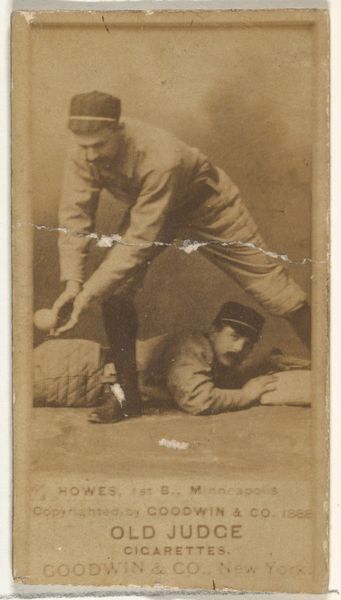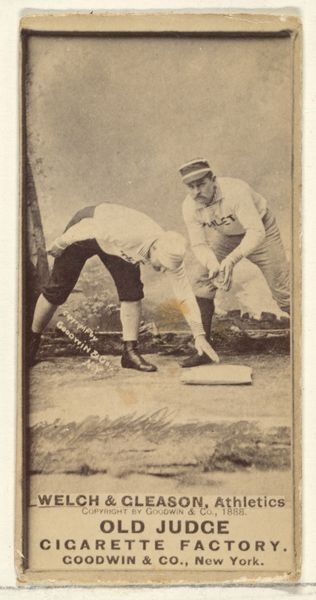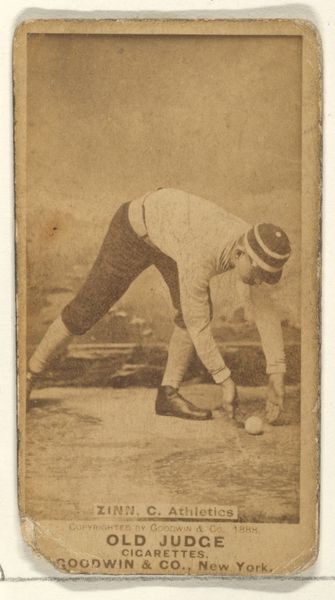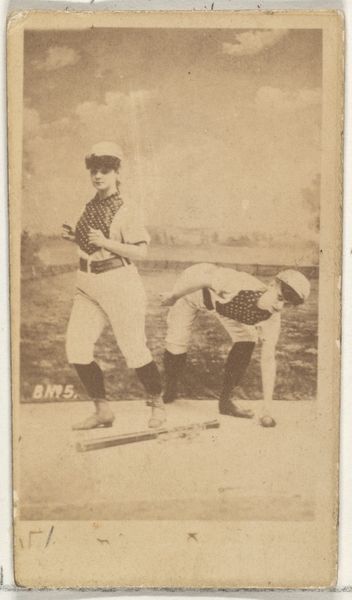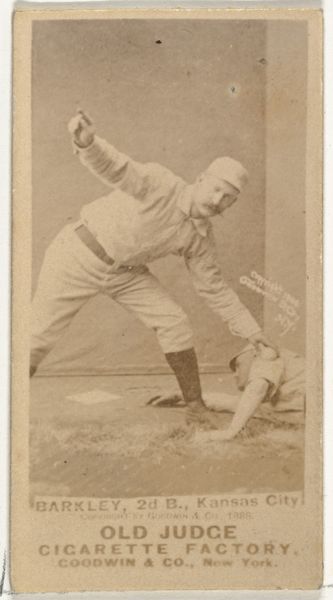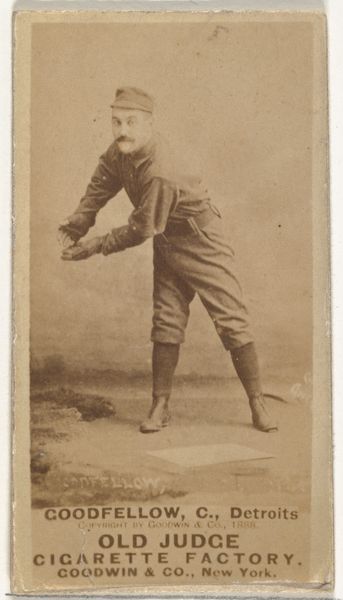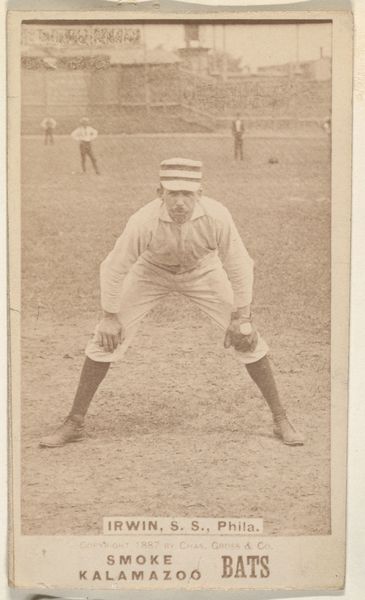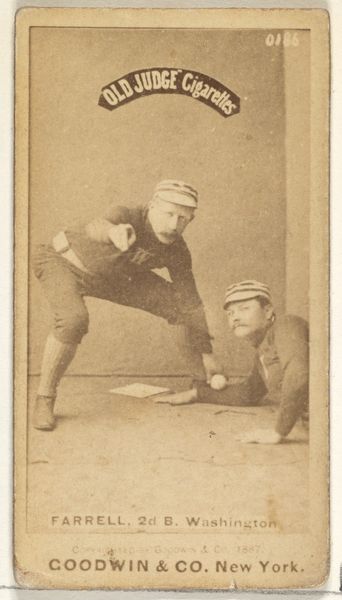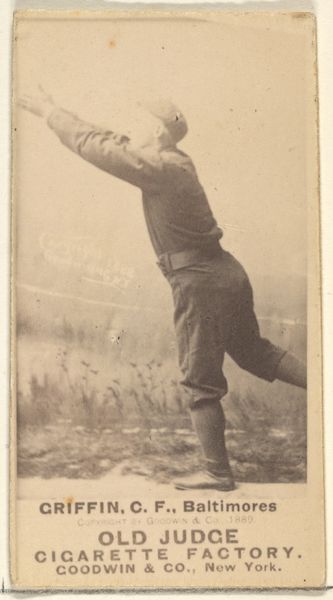
Joseph Cheetham en andere man spelen cricket in Rusland 1903 - 1904
0:00
0:00
photography, gelatin-silver-print
#
portrait
#
pictorialism
#
photography
#
gelatin-silver-print
#
genre-painting
#
realism
Dimensions: height 83 mm, width 109 mm
Copyright: Rijks Museum: Open Domain
Editor: Here we have a gelatin-silver print from between 1903 and 1904, titled "Joseph Cheetham and another man playing cricket in Russia." There's something very staged and performative about it that strikes me. What do you see in this photograph? Curator: What I find fascinating here is the intersection of class, sport, and empire. Cricket, deeply rooted in British culture, transported to Russia during a time of significant social upheaval. Who had access to this sport? What does it mean to recreate such a quintessentially British pastime on foreign soil? Editor: That’s a really interesting point. It does seem out of place, almost like a colonial performance. Curator: Precisely. The seemingly innocent image of a game speaks volumes about the global reach of British influence and the social hierarchies it imposed. It raises questions about cultural appropriation, the spread of imperialism through leisure, and the experiences of those who were excluded from such displays of privilege. Look at the body language - are we seeing camaraderie, or something else? Editor: So it’s more than just a photograph of two men playing cricket; it’s about power and identity? Curator: Exactly. It's about unearthing those layers and questioning the narratives we often take for granted. What stories aren't being told in this picture, whose voices are silent? Considering photography’s own history as a tool of colonial documentation, what ethical responsibility do we have when looking at images like this? Editor: This makes me rethink the whole image. I had initially perceived it as quirky, but now I see these deeper implications of cultural dominance. Curator: And that's the power of art – to provoke critical reflection and help us see the world through a more nuanced and socially conscious lens.
Comments
No comments
Be the first to comment and join the conversation on the ultimate creative platform.
